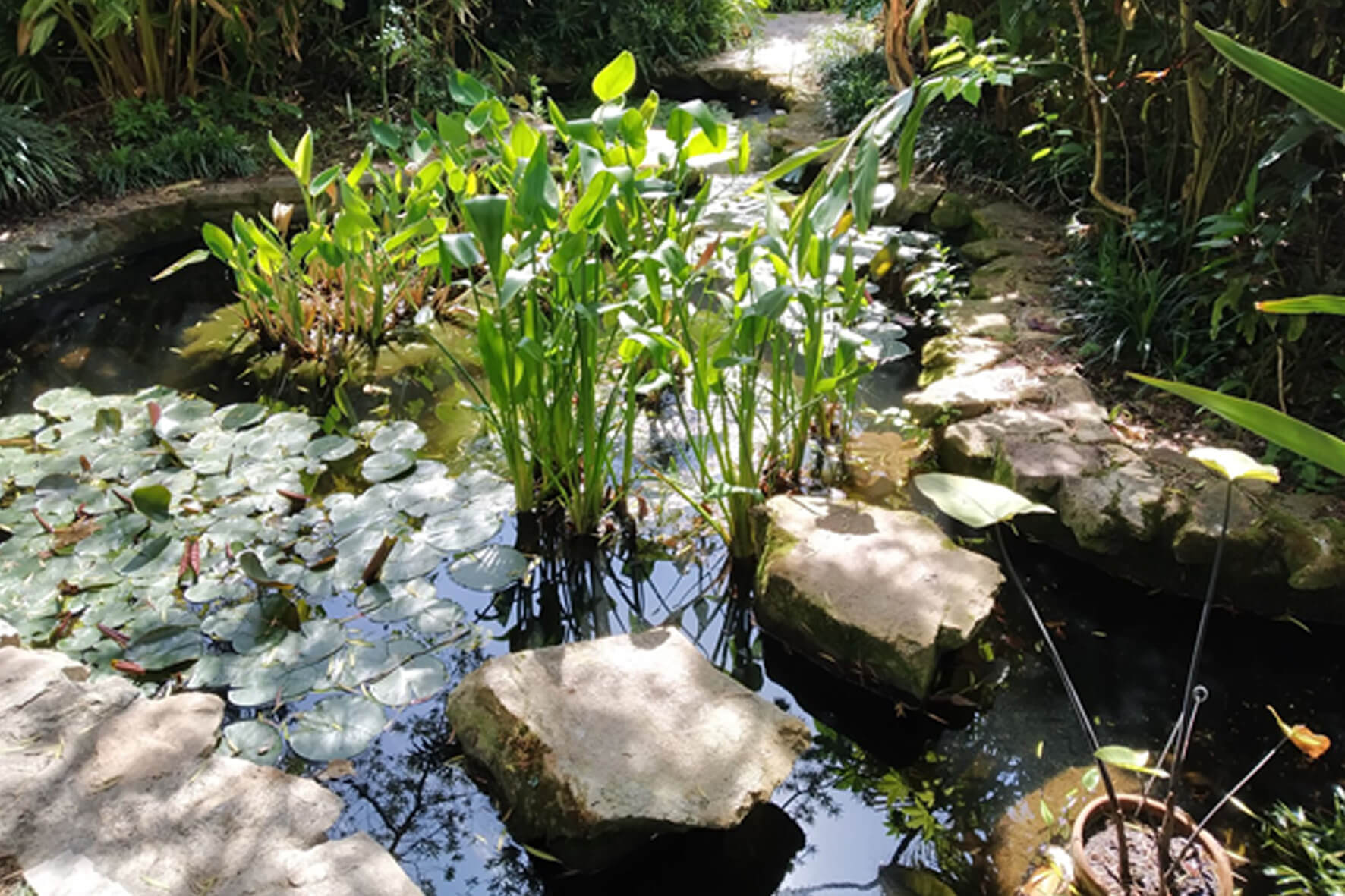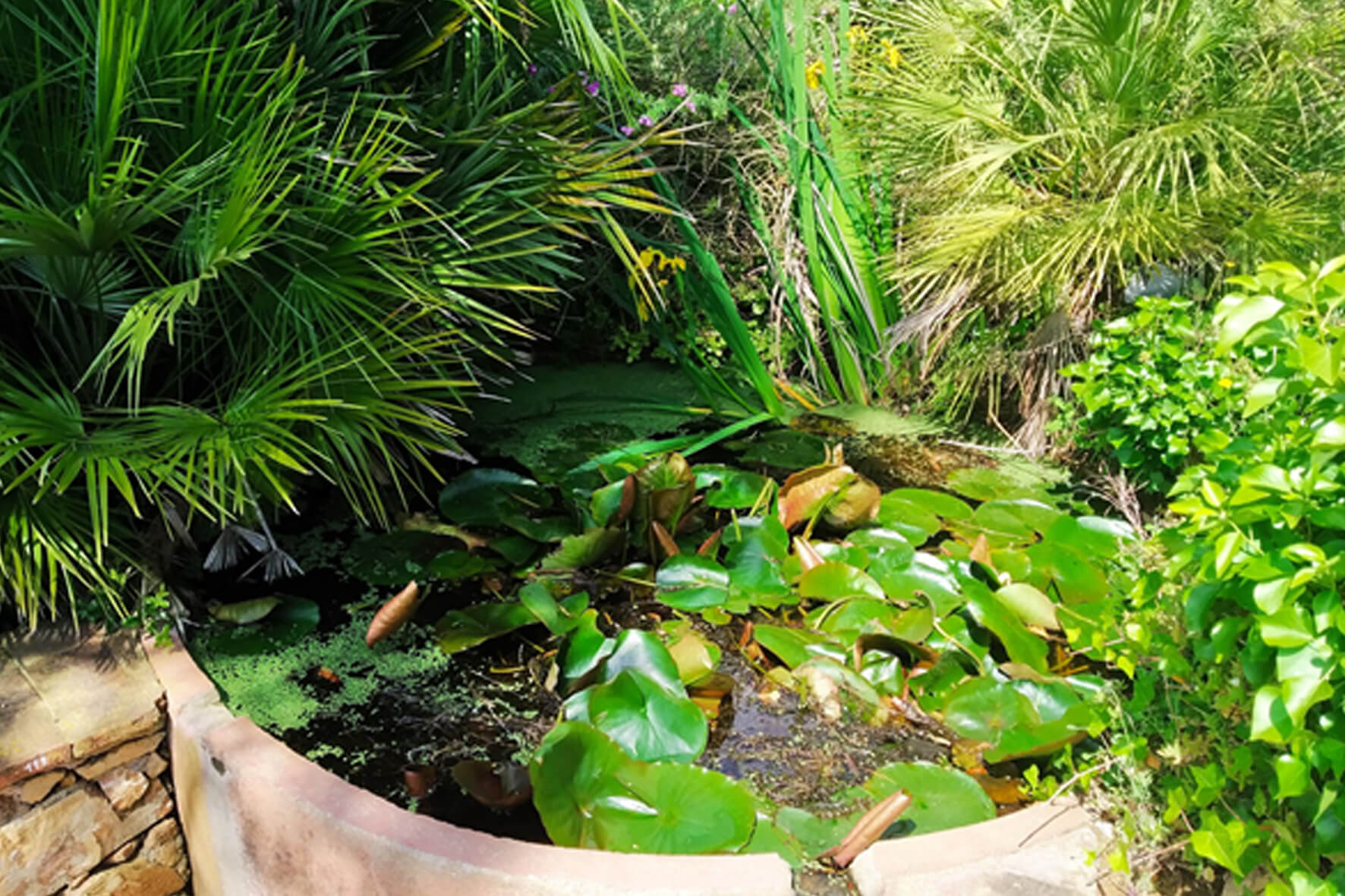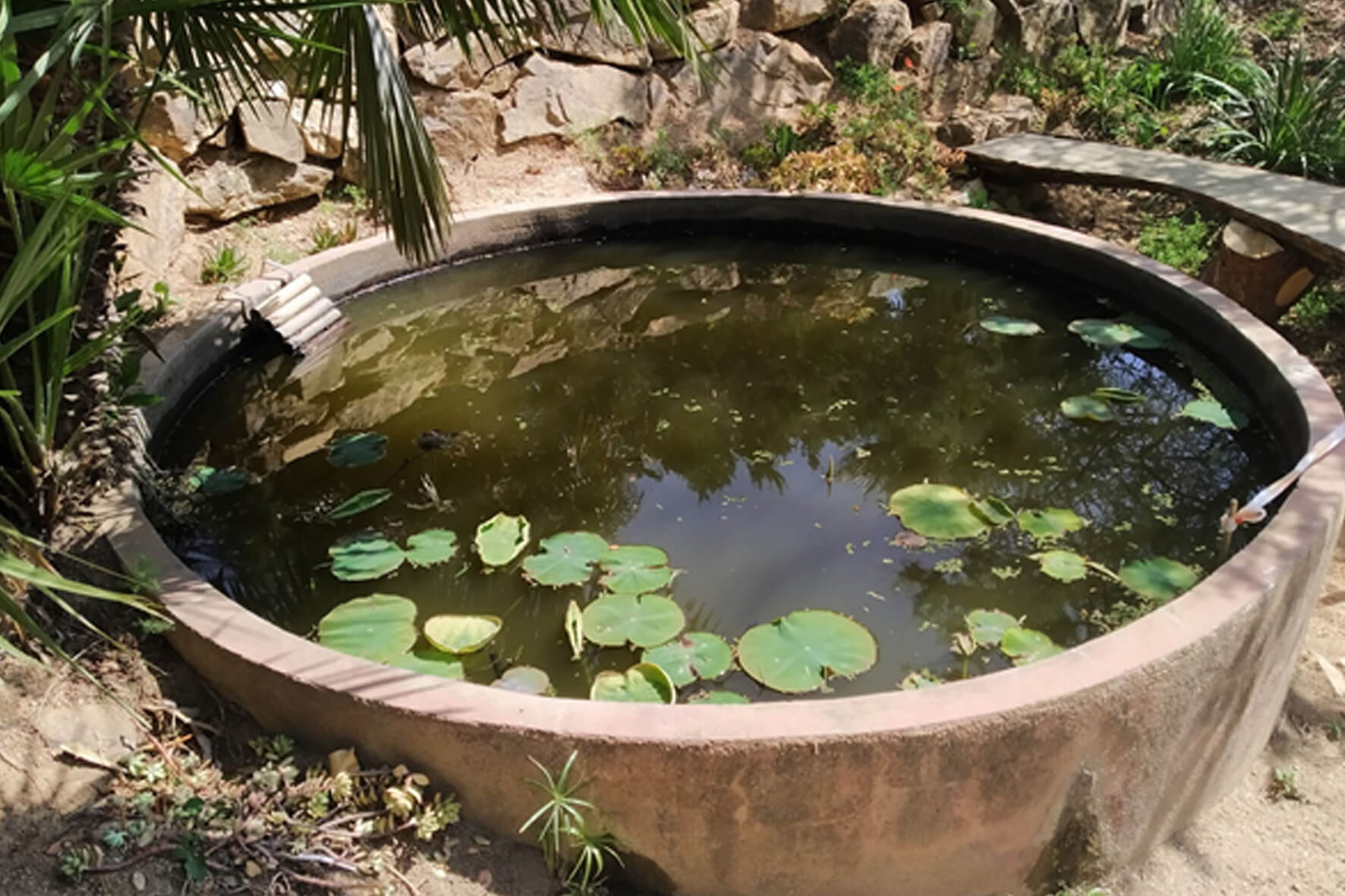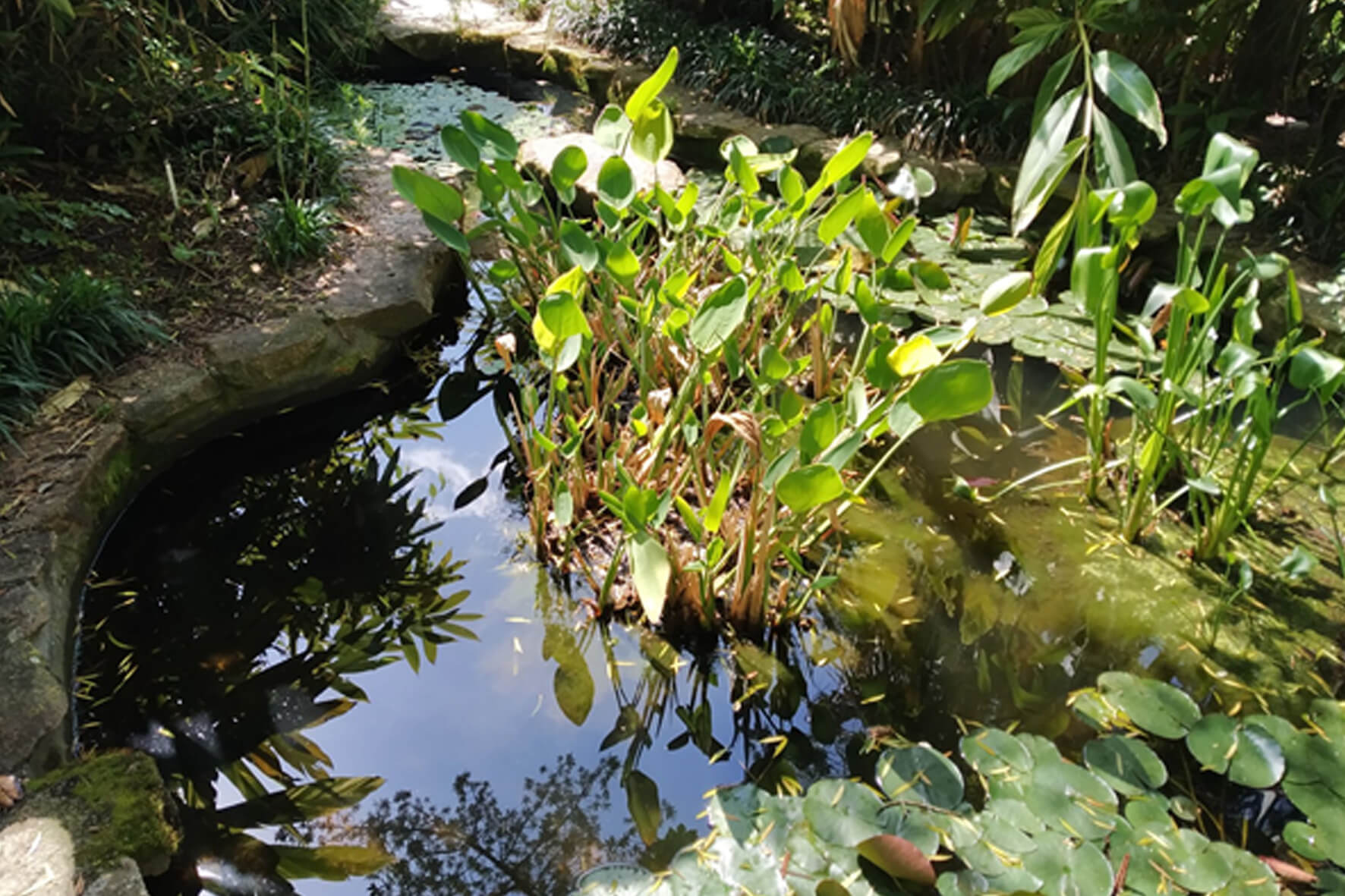The Marimurtra Botanical Garden contains different aquatic environments, each with its own characteristics, where you can find different plant and animal species, both native and exotic. In the Braun-Blanquet pond, for example, there are plant species such as water lilies, lotus and some animals such as frogs, toads, some snakes and occasionally some birds such as the heron, which sometimes visit Marimurtra in season. of summer. This is why a low-intrusive pond maintenance strategy is sought, as the aim is to maintain the ecosystem that has formed there.
Therefore, it tends to create the conditions that allow to maintain a natural balance between the fauna and the flora of the aquatic surroundings and that this one self-regulates itself. This involves monitoring which animal and plant communities proliferate most at any given time, as well as conducting cleanings to remove excess organic matter and filamentous algae that can cause a drop in oxygen levels and the proliferation of certain bacteria.
Another aspect of maintaining biodiversity, an absolutely key issue in the global management of the Marimurtra Botanical Garden, is the non-use of chemicals and phytosanitary products. These products are responsible for protecting plants and their fruits, but at the same time harm the environment of the plant, as it kills fungi, bacteria, other insects, etc. which are beneficial to the biological set in which they live. That is, they harm biodiversity, which, over time, would be detrimental not only to the animal and plant biodiversity itself but also to the soil and climate. One of the worst consequences of this lack of biodiversity will be that there will be a point where the soil will not be fertile enough for cultivation and the land will be deserted, without nutrients and without life. Therefore, the project to naturalize aquatic environments has a clear ambition to generate global effects.
One of the key points of this project is the introduction of aquatic plants in Marimurtra, with an important ecological and aesthetic value, such as attracting pollinators, constitute a reserve of oxygen for water, become biotopes for aquatic fauna, etc.
This is one of the projects carried out in collaboration and through an academic agreement with the University of Girona.
| Project features
Current situation: we are working on the naturalization of aquatic environments by introducing different plant species. Target: to carry out a global planning of the aquatic environments of Marimurtra that includes actions for the coming years. Request € 18,000 over 3 years Counterparties:
|







